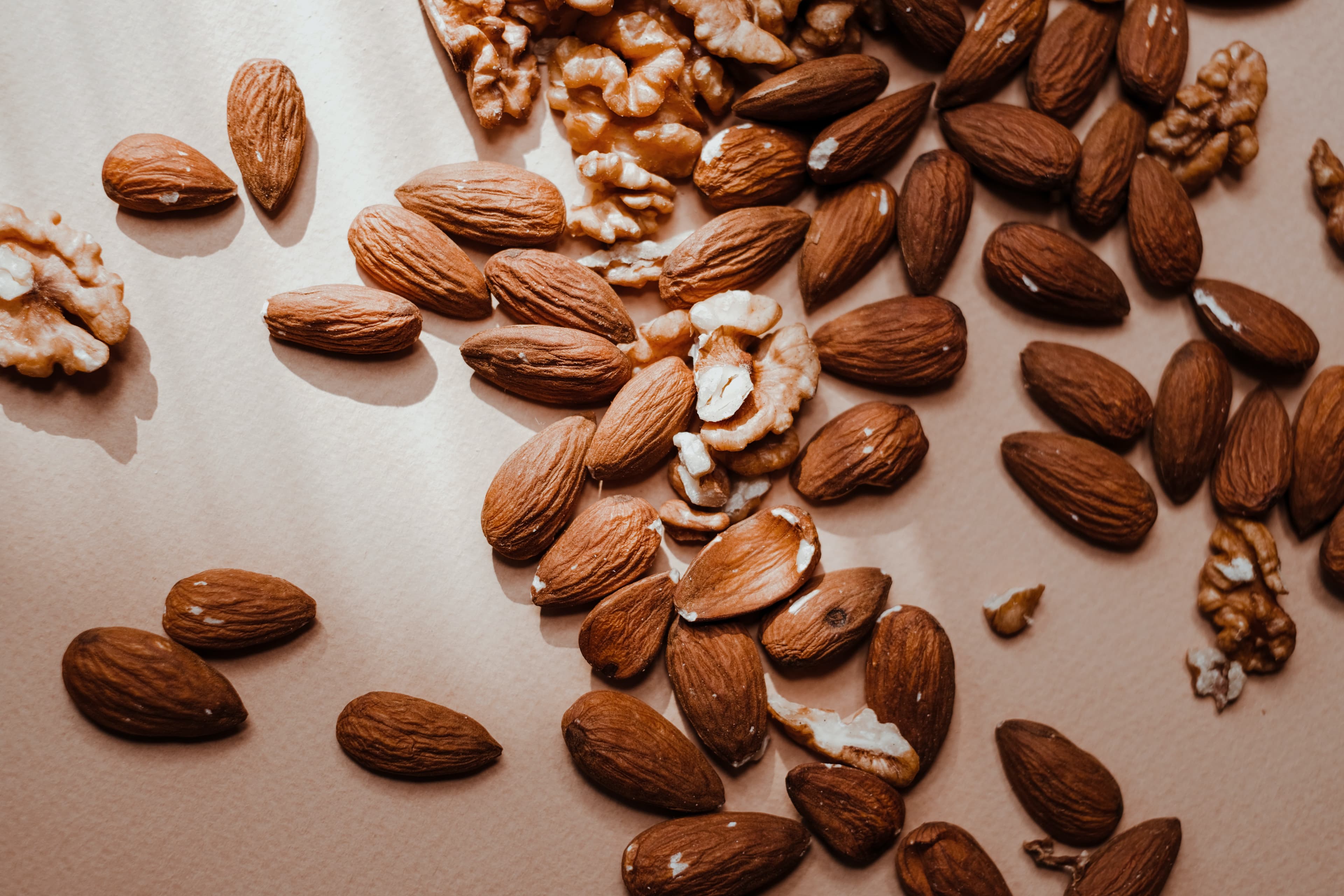Stomach ulcers are a common digestive problem for older adults. About 17% of people ages 80 and over have at least one peptic ulcer, according to the National Institutes of Health. Most stomach ulcers heal on their own, but successful recovery often involves avoiding some foods while adding others to your diet.
To learn more about the best diet for stomach ulcers, we contacted several registered dietitians. Below, we talk about how eating healthier foods can make you feel better and help your body heal faster.
What Are Stomach Ulcers?
Stomach ulcers, also known as gastric or peptic ulcers, are small, open sores that form in the lining of the stomach or the upper part of the small intestine. “They can be painful and are often caused by an infection of the bacterium H. pylori,” explains Mary-Ellen Sabat, RD, a registered dietitian and ACE-certified trainer. “Other common causes of stomach ulcers include excessive use of pain relievers and high levels of stomach acid.”
Can a Healthy Diet Prevent Stomach Ulcers from Getting Worse?
Most people with stomach ulcers need to change their diet in order to reduce symptoms and encourage healing.
“Eating better foods can relieve irritation and discomfort,” Sabat says. “However, diet alone may not cure ulcers; it’s usually part of a broader treatment plan that includes medication. A healthy diet can help by reducing symptoms and creating a more favorable environment for healing.”
What You’ll Need
Drastically changing your diet can be difficult, especially if your favorite snacks or meals make your symptoms worse. Since it can be challenging to make dietary changes on your own, consider working with a registered dietitian.
“A registered dietitian can provide personalized dietary guidance tailored to your specific needs and preferences,” Sabat explains. “They can help create a balanced diet that minimizes stomach irritation and promotes healing.”
Trouble to find a registered dietitian? The Academy of Nutrition and Dietetics has an online database of credentialed nutrition and dietetics practitioners. Visit the website and enter your state or zip code to find experts in your area. You can also ask your doctor for a referral if you don’t use the internet.
The Best Diet for Stomach Ulcers - Step-by-Step Nutrition Recommendations
There are various foods that can benefit people with stomach ulcers, including:
Step 1: Eat High-Fiber Foods
Fiber-rich foods help promote bowel regularity, but they can also reduce the risk of stomach ulcers. That’s because fiber reduces the amount of acid in your stomach and helps prevent ulcers from forming.
Lori Walker, RD, a registered dietitian at Easy Kitchen Guide, recommends getting fiber from three sources:
Fruits
“Fruits are high in antioxidants which help protect against inflammation in the stomach lining,” Walker explains. “Examples include apples, oranges, bananas, berries, and melons.”
You may also want to stock up on tropical fruits, like mangos. “Surprisingly, mangos have compounds like mangiferin that show promise in ulcer healing,” says Jennifer Silver, DDS, an experienced dentist and stomach ulcer patient. “These compounds may shield the stomach lining and reduce inflammation.”
Vegetables
“Vegetables are high in fiber, which can help protect against irritation to the stomach lining. Examples include leafy greens, tomatoes, beets, carrots, and broccoli.”
Juicing vegetables can help you get even more beneficial nutrients. “Cabbage juice, in particular, is rich in glutamine, an amino acid known for its gastrointestinal benefits,” says Dr. Silver. “It can aid in the recovery of damaged stomach tissues.”
Whole grains
“Whole grains include oats, quinoa, barley, and brown rice,” says Walker. “Like vegetables, they’re high in fiber which helps reduce inflammation, bulks up stool (making it easier to pass), and protects the stomach lining.”
Step 2: Substitute Red Meat with Lean Proteins
Red meat has lots of protein, but it’s hard for your stomach to break down. As a result, it tends to cause bloating and gas, making stomach ulcers worse.
“Lean proteins provide many of the same benefits, but are easier to digest and provide essential amino acids for repair,” says Walker. “Examples of lean proteins include poultry, beans, fish, and tofu.”
Step 3: Eat Probiotic Foods to Support Your Gut Microbiome
“Emerging research emphasizes the importance of a healthy gut microbiome in ulcer management,” says Dr. Silver. “Probiotic-rich foods like kimchi and kefir can play a pivotal role in balancing gut bacteria, reducing the risk of H. pylori infection, and bolstering the body’s natural defenses.”
Sabat agrees, adding that “dairy products like milk and yogurt are excellent sources of probiotic bacteria. They also have a soothing effect and can help neutralize stomach acid, a main source of stomach ulcer discomfort.”
Shop All Probiotics on Carewell
Step 4: Be Mindful of Foods that Increase Stomach Acid Production
Certain foods, like citrus and nightshades (e.g., tomatoes, potatoes, and peppers), increase stomach acid production. Alliums, like onions and garlic, can also make stomach ulcer symptoms worse.
“While ulcers aren’t solely caused by stomach acid, some foods can either stimulate acid secretion or provide soothing relief,” says Dr. Silver. “For instance, I’ve found that ginger and licorice root are surprisingly effective in protecting the stomach lining.”
Sabat concurs, noting that people with stomach ulcers should avoid certain types of food altogether, including:
Spicy foods which can irritate the stomach lining
Citrus fruits and juices, which are acidic and can worsen symptoms
Coffee and carbonated beverages, which increase stomach acid production
Fatty and fried foods which slow digestion and lead to discomfort
“It's generally advisable for someone with stomach ulcers to limit caffeine and alcohol consumption,” Sabat says. “Both can increase stomach acid production and irritate the lining, potentially worsening symptoms.
Step 5: Avoid Inflammatory Foods
Even foods that aren’t acidic can increase the risk of stomach inflammation. For example, snacks and meals with lots of trans fat or sugar can irritate stomach ulcers and slow the body’s healing process. If you have stomach ulcers, it’s recommended that you avoid fast food and other junk altogether.
Step 6: Include Healthy Fats In Your Meals and Snacks
It’s important to reduce the intake of trans fat and saturated fat if you have stomach ulcers, but some fat is beneficial.
“Healthy fats can help reduce inflammation in your gut and provide important nutrients for healing,” says Walker. “Examples of healthy fats include olive oil, avocado, nuts, and seeds.”
Step 7: Embrace a Stomach-Friendly Diet
If you have a lot on your plate, it can be difficult to pick and choose from a list of stomach-friendly ingredients. To make grocery shopping and meal planning easier try adhering to a diet plan.
“While there isn’t a specific stomach ulcer diet, the Mediterranean diet is often recommended to those with stomach ulcers, because it includes many of the beneficial foods mentioned earlier,” says Sabat. “It’s high in fruits, vegetables, whole grains, and healthy fats like olive oil, which can be soothing to the stomach and reduce inflammation.”
Walker agrees, adding that “the Mediterranean diet also emphasizes the importance of limiting alcohol and caffeine which can irritate the stomach lining.”
Best Diet for Stomach Ulcers - Commonly Asked Questions
1) Are there other ways to reduce stomach ulcer symptoms, other than eating a healthier diet?
Yes. Food quality is incredibly important, but so is food quantity. Instead of eating three large meals a day, try eating smaller meals more frequently.
When you eat small portions of nutrient-dense food, it’s easier for your stomach to digest it. Smaller meals can also reduce symptoms like heartburn and bloating, and help speed up the natural healing process.
2) How often should I visit the doctor if I have a stomach ulcer?
The frequency of doctor visits depends on your general health and the severity of your ulcer (or ulcers). Most people with stomach ulcers benefit from routine checkups and monitoring.
“Your doctor might recommend tests, such as an endoscopy or blood work to assess the health of your stomach lining,” says Walker. “They may also order tests to evaluate the presence of H. pylori, a bacteria that is known to cause stomach ulcers.”
3) Is a peptic ulcer the same thing as a stomach ulcer?
Yes. Stomach ulcers go by several names, including peptic ulcers, stomach ulcers, and duodenal ulcers. All three names describe the same thing –– an open sore in your stomach lining or small intestine.
Have Questions About Your Loved One’s Diet?
You probably have lots of questions if you or your loved one have stomach ulcers. Our Care Specialists are available to help with all of your grocery and meal prep needs. Whether you need help finding a probiotic supplement or have questions about stomach-friendly ingredients, we’re here to help! Call (800) 696-CARE or send an email to support@carewell.com.



